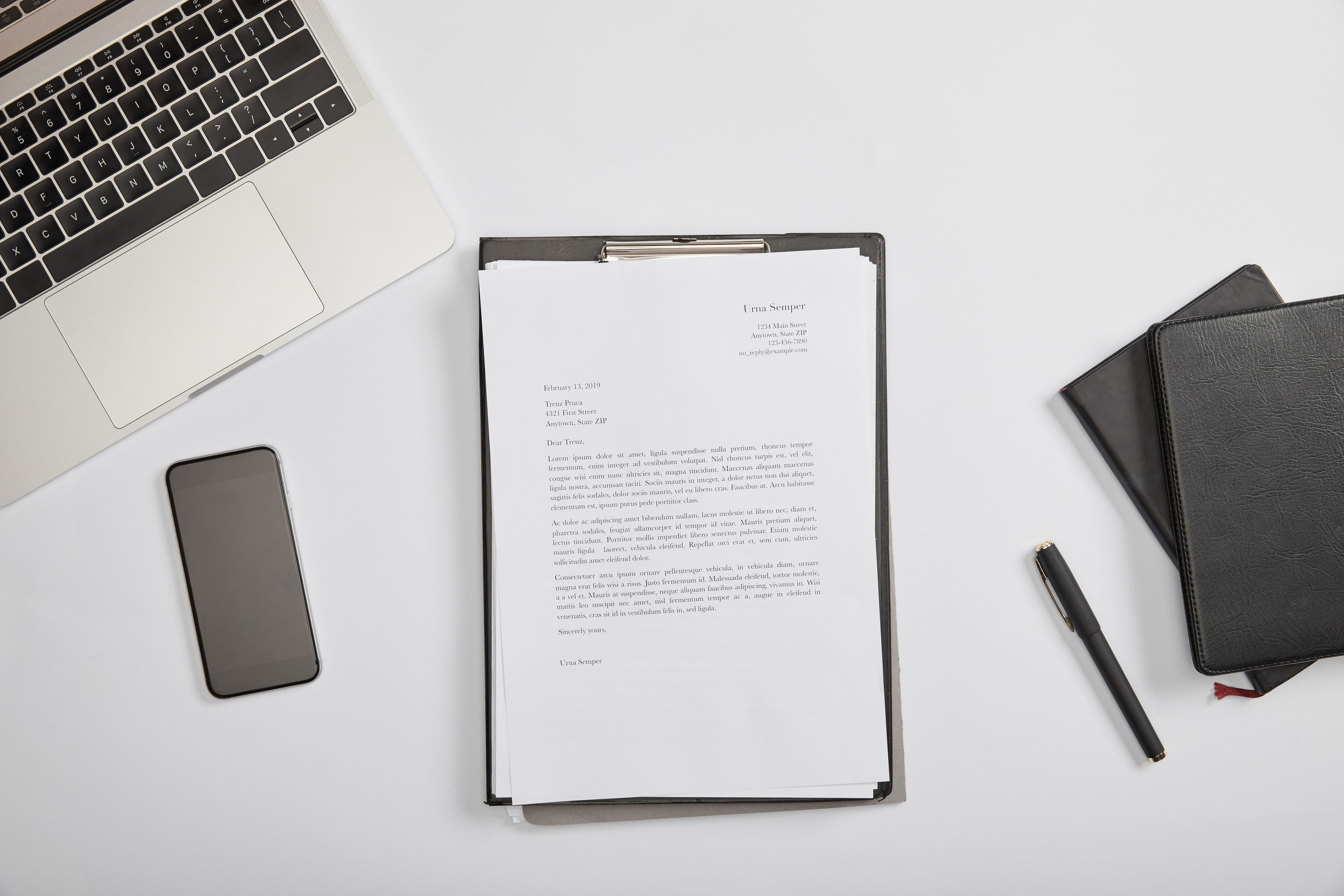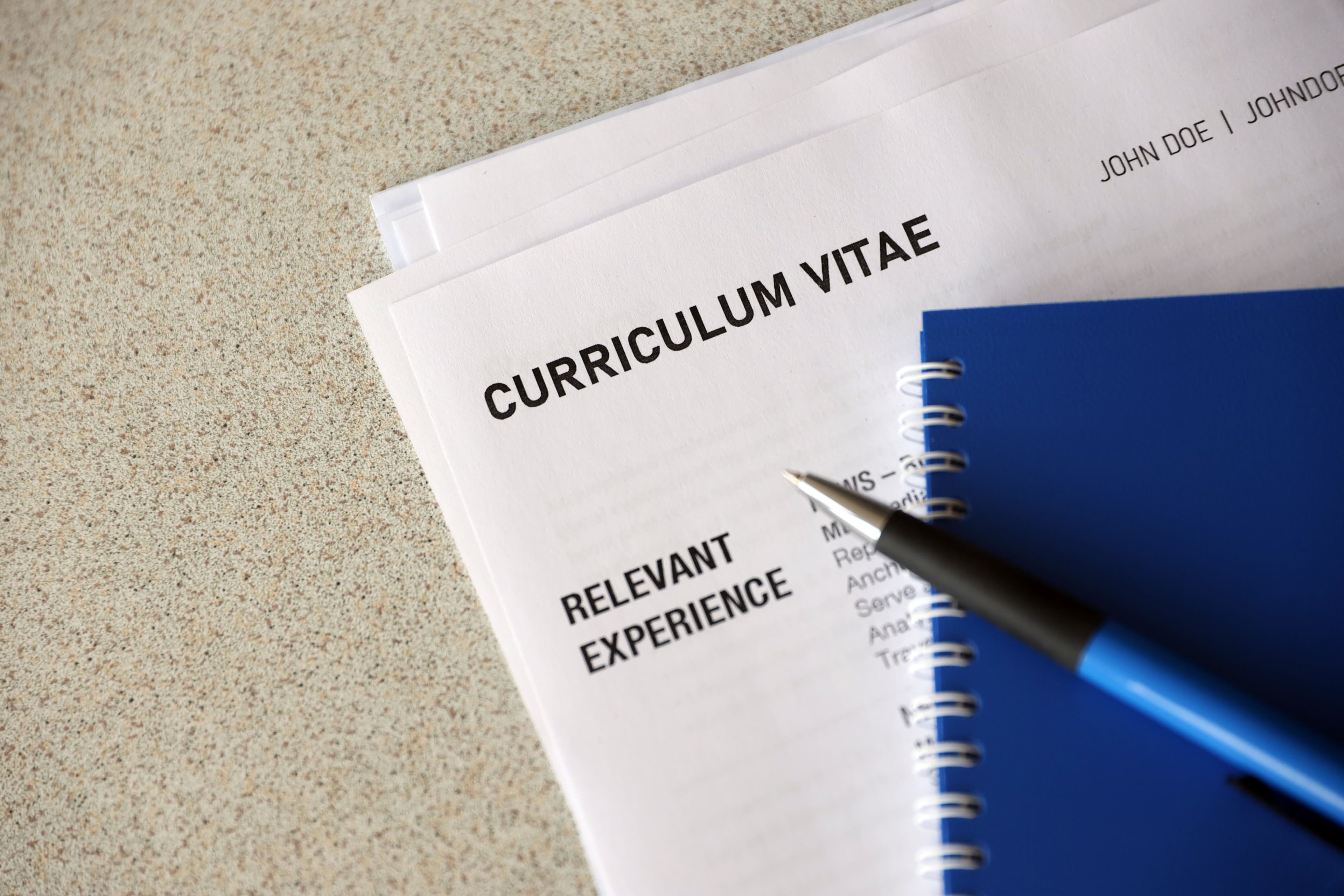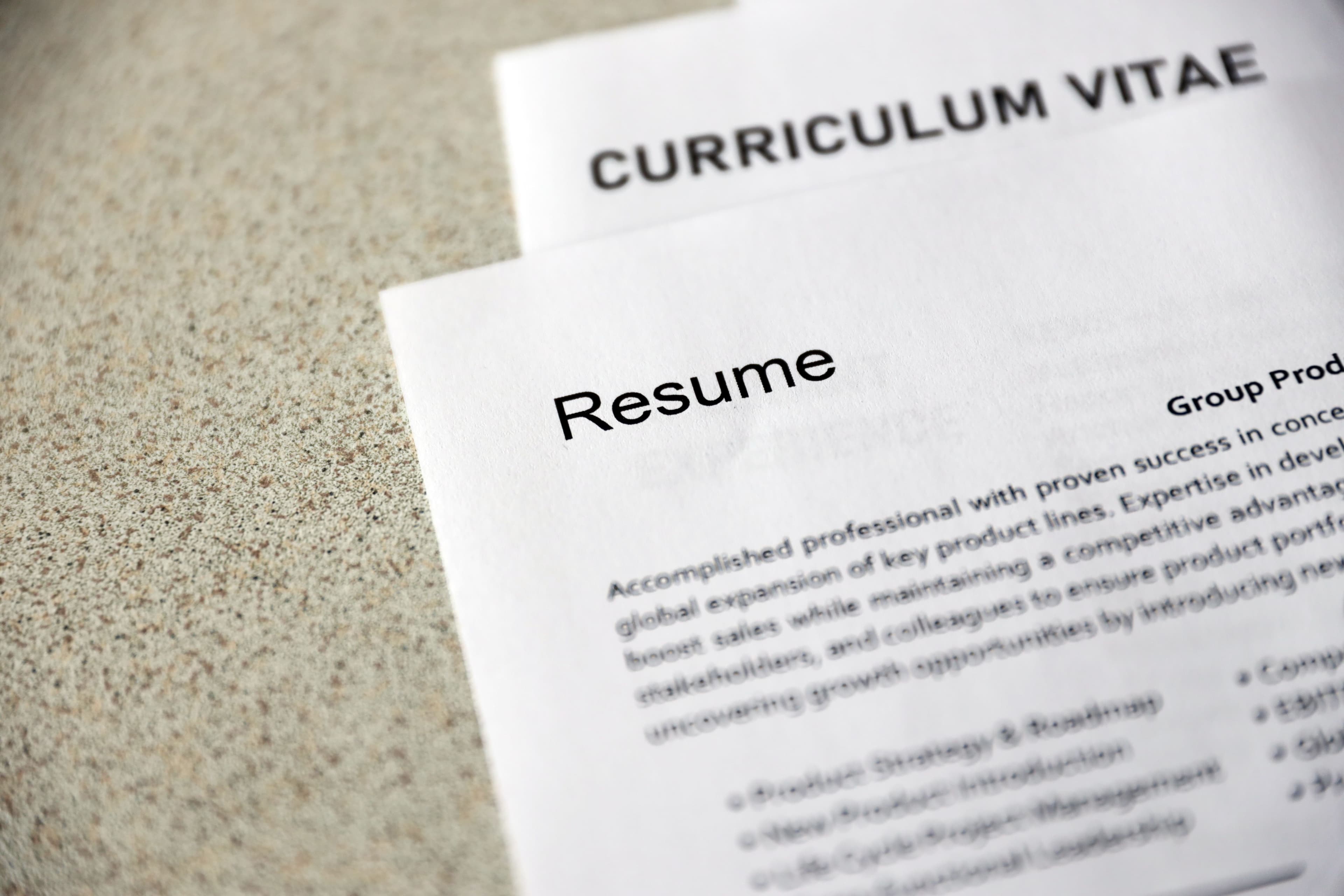How to Write a Cover Letter That Gets Results
03.19.2025
Job Resources

A well-crafted cover letter can be the difference between landing your dream job and getting lost in a pile of applications. According to ResumeLab, 83% of recruiters believe that a high-quality cover letter is an important factor in hiring decisions.
Think of your cover letter as a personal introduction—your chance to tell your professional story in a way your resume simply can't. It gives you a chance to connect with hiring managers and recruiters while demonstrating why you're the perfect fit for both the position and the organization.
Unfortunately, too many job seekers struggle with how to approach this crucial document, especially when facing different career situations like applying for internships or entering the workforce with limited experience.
That’s why we're going to walk through everything you need to know about writing an effective cover letter—from basic structure to advanced techniques that will help you stand out from the competition.
What Is a Cover Letter?
A cover letter is a one-page document that accompanies your resume when applying for a job. Its purpose is to introduce yourself to a potential employer, briefly summarize your professional background, and explain why you're the right candidate for the position.
While your resume provides a structured overview of your skills and experience, a cover letter allows you to highlight specific achievements, show your personality, and demonstrate your written communication skills.
Understand the Basic Cover Letter Structure
Every effective cover letter includes the following elements and structure:
- Header: Your contact information and the date
- Greeting: A personalized salutation to the hiring manager
- Opening paragraph: An engaging introduction that hooks the reader
- Body paragraphs (1-2): Evidence of your qualifications and achievements
- Closing paragraph: A call to action and expression of gratitude
- Professional sign-off: "Sincerely" or similar closing, followed by your name
This structure provides a framework that's adaptable to different situations, whether you're writing a cover letter for a job with years of experience, seeking an internship, or applying with no prior professional background.
How Long Should a Cover Letter Be?
One of the most common questions about cover letters is how long they should be. The answer is straightforward: a cover letter should be between 250-400 words, fitting comfortably on a single page.
Hiring managers and recruiters often review dozens of applications daily, so brevity and clarity are essential. A concise, well-written letter demonstrates your ability to communicate efficiently—a skill valued in virtually every professional role.
Step-by-Step Guide to Writing an Effective Cover Letter
Now that you understand the fundamentals, it’s time to break down the process of creating your cover letter into manageable steps. Following this methodical approach will help ensure you don't miss any critical elements.
Step 1: Research the Company and Position
Before typing a single word, invest time in understanding the organization and role. Visit the company's website, read recent news articles, review their social media, and study the job description carefully. Identify:
- The company's mission, values, and culture
- Key challenges the organization or department might be facing
- Specific skills and qualifications emphasized in the job posting
- The tone and language used in company communications
This research enables you to speak directly to the company's needs and align your letter with their values—demonstrating genuine interest beyond a generic desire for employment.
Step 2: Formatting and Layout Essentials
Professional formatting signals attention to detail and respect for the reader's time:
- Use a clean, professional font (Arial, Calibri, or Times New Roman) at 10-12 point size
- Set margins at 1 inch on all sides
- Align text to the left (no justification)
- Include a space between each paragraph
- Match the header style to your resume for consistency
- Save your document as a PDF to preserve formatting (unless otherwise specified)
Not to mention, overly formatting your cover letter can make it more difficult to read for both people and automated filters.
Step 3: Craft an Attention-Grabbing Opening
Your opening paragraph needs to accomplish three things: identify the position you're applying for, provide a compelling reason why you're interested, and give a brief preview of why you're qualified. Avoid clichéd openings like "I am writing to apply for..." Instead, try one of these approaches:
- Mention a mutual connection (if applicable)
- Reference an impressive company achievement that resonates with you
- Share a brief story that demonstrates your passion for the industry
- Lead with an impressive achievement that's relevant to the role
For example:
"When I implemented a new inventory management system that reduced costs by 23% at XYZ Company, I discovered my passion for operational efficiency—a passion that aligns perfectly with the Supply Chain Analyst position at ABC Manufacturing."
Step 4: Develop Powerful Body Paragraphs
The middle section of your cover letter is where you make your case. Select 2-3 key qualifications or experiences that directly relate to the job requirements, and provide specific evidence of your capabilities. Use the "problem-action-result" formula to structure these examples:
- Identify a relevant challenge or opportunity you encountered
- Explain what actions you took
- Quantify or qualify the positive results you achieved
Remember to focus on what you can do for the employer, not what the job can do for your career. Each paragraph should build confidence that you understand the role and have the necessary skills to excel.
Step 5: End Your Cover Letter Effectively
How you close your cover letter is crucial—it's your final chance to make an impression and prompt action. An effective closing paragraph should:
- Express enthusiasm for the opportunity to contribute to the company
- Include a clear call to action (such as requesting an interview)
- Thank the reader for their consideration
- Maintain a confident, professional tone
For example:
"I'm excited about the possibility of bringing my data analysis expertise and team leadership experience to your marketing department. I welcome the opportunity to discuss how my background aligns with your needs during an interview. Thank you for considering my application."
Step 6: Choose an Appropriate Sign-Off
Conclude with a professional salutation such as "Sincerely," "Best regards," or "Thank you," followed by your full name. If submitting a physical letter, leave space for your handwritten signature.
Now let’s look at how to approach writing a cover letter depending on where you are in your career discovery journey.
Tailoring Cover Letters for Different Situations
While the basic structure remains consistent, the content of your cover letter should be adapted to fit specific circumstances. Different career stages and application types require different approaches.
Let's examine how to customize your cover letter for various scenarios.
How to Write a Cover Letter for a Job Application
When applying for a standard job position, focus on demonstrating how your experience and achievements have prepared you for the specific responsibilities outlined in the job description. Use industry terminology familiar to the hiring manager, and highlight transferable skills if changing industries. Most importantly, show how your unique background makes you not just qualified, but exceptional.
How to Write a Cover Letter for an Internship
Internship cover letters should emphasize eagerness to learn and contribute, even with limited professional experience. Focus on:
- Relevant coursework and academic achievements
- Student leadership roles or volunteer experience
- Technical or soft skills developed through projects
- Clear articulation of what you hope to learn and contribute
- Demonstration of knowledge about the organization
Remember that internship managers expect less workplace experience but value enthusiasm, learning agility, and relevant academic background.
How to Write a Cover Letter with No Experience
When you lack direct professional experience, your cover letter becomes even more important. Focus on:
- Transferable skills from academic projects, volunteer work, or extracurricular activities
- Specific examples showing initiative, work ethic, and problem-solving abilities
- Coursework or training relevant to the position
- Personal qualities that align with the company culture
- Genuine enthusiasm for the opportunity to begin your career with the organization
For example:
"While I haven't yet held a professional marketing position, my experience managing social media campaigns for my university's student government increased event attendance by 45% and taught me valuable skills in content planning, audience engagement, and performance analytics."
Cover Letters for Career Changes
When transitioning to a new field, your cover letter must bridge the gap between your experience and the new role:
- Highlight transferable skills relevant to the target position
- Explain your motivation for changing careers (hint: don’t say “follow your passion”)
- Address potential concerns about your transition proactively
- Demonstrate knowledge of the industry you're entering
- Connect the dots between past achievements and future contributions
Common Cover Letter Mistakes and How to Avoid Them
Crafting an effective cover letter isn't just about doing the right things—it's also about avoiding common pitfalls that can undermine your efforts. Being aware of these mistakes can help you create a more polished, professional impression.
Even qualified candidates can sabotage their chances with these common errors:
- Generic, template-based content: Recruiters can spot a generic cover letter immediately. Ensure every letter is tailored to the specific position and company.
- Focusing too much on yourself: While a cover letter introduces you, it should primarily address how you'll solve problems for the employer. For every "I" statement, include a benefit to the company.
- Typos and grammatical errors: These suggest carelessness and poor attention to detail. Always proofread carefully and ask someone else to review your letter.
- Inappropriate tone: Strike a balance between professionalism and personality. Avoid being too casual or too stiff and formal.
- Repeating your resume verbatim: Your cover letter should complement, not duplicate, your resume. Provide context and storytelling around your most relevant qualifications.
Keep these points in mind and you’ll know how to write a cover letter that speaks directly to hiring managers and recruiters.
Short Cover Letter Sample and Analysis
Sometimes the best way to understand effective cover letter writing is to see it in action. Below is a sample that demonstrates the principles we've discussed in a concise, impactful format.
Here's an example of a concise, effective cover letter for a marketing coordinator position:
Dear [Employer Contact],
When I increased social media engagement by 78% for XYZ Nonprofit during their annual fundraising campaign, I discovered the power of strategic digital marketing to drive meaningful outcomes. It's this experience—along with my passion for data-driven storytelling—that makes me particularly excited about the Marketing Coordinator position at ABC Company.
In my current role as Communications Assistant at XYZ Nonprofit, I've developed comprehensive skills in content creation, campaign management, and analytics.
My recent achievements include:
- Redesigning the email newsletter format, resulting in a 23% increase in open rates
- Collaborating with the development team to create multimedia content that helped exceed fundraising goals by $45,000
- Implementing an A/B testing strategy for landing pages that improved conversion rates by 15%
Your job description mentions the need for someone who can balance creative vision with analytical thinking—a combination I've deliberately cultivated throughout my early career. I'm particularly drawn to ABC Company's mission to make sustainability accessible for everyday consumers, having volunteered with environmental organizations throughout college. I'm eager to discuss how my background in nonprofit marketing could bring a fresh perspective to your commercial campaigns.
Thank you for considering my application.
Sincerely, [Applicant]
Why this works:
- Opens with a specific achievement that grabs attention
- Clearly states why the applicant is interested in this particular role
- Provides quantifiable results that demonstrate marketing expertise
- Addresses specific needs mentioned in the job description
- Shows knowledge of the company's mission
- Maintains a professional yet conversational tone
- Stays concise at under 250 words
Quick Tips for Writing a Cover Letter
Once you've mastered the basics, you can use these cover letter tips to differentiate yours from other qualified candidates. These techniques can help elevate your application from good to memorable.
Use Storytelling Techniques
Stories are memorable and engaging. Instead of simply stating "I have leadership experience," tell a brief story about how you led a team through a challenge. This approach creates a stronger emotional connection and makes your application more memorable.
Quantify Achievements
Numbers add credibility and impact to your claims. Whenever possible, include specific metrics:
- Percentage increases in efficiency, sales, or engagement
- Dollar amounts of revenue generated or costs saved
- Number of people managed, clients served, or projects completed
- Time frames for achieving results
Address Potential Concerns Proactively
If there's an obvious gap in your experience or an unusual aspect to your application (like a career change or employment gap), address it briefly and positively. For example:
"While my formal training is in accounting, my volunteer experience designing websites for local businesses sparked my passion for web development, which I've since formalized through completion of a front-end developer certification."
Optimize for Applicant Tracking Systems (ATS)
Many companies use ATS software to screen applications before human eyes ever see them. Improve your chances by:
- Including keywords from the job description naturally throughout your letter
- Using standard section headings
- Avoiding unusual formatting, tables, or graphics
- Submitting your cover letter in the requested format (usually PDF or Word)
Speed Up Your Career Journey Further with My Career Shop
A powerful cover letter opens doors, transforming you from a list of qualifications to a memorable candidate with a compelling story. Whether you're writing your first cover letter, applying for an internship, or advancing your established career, remember that hiring managers aren't just filling positions—they're solving problems. Your cover letter should position you as the solution they've been looking for.
Don't navigate your career journey alone. Check out episodes of the My Career Shop podcast to learn from experts in the very industries you’re looking to enter.
Subscribe to My Career Shop Content
Stay up to date with Blog Posts and Podcast Episodes!
Your One Stop Shop For All Career Resources
Whether you are exploring new career paths, building your resume, or preparing for your next opportunity, our tools, templates, and guidance are designed to help you navigate your career journey with clarity and confidence.
Copyright © 2025 My Career Shop. All rights reserved.

























